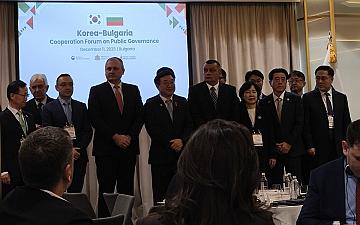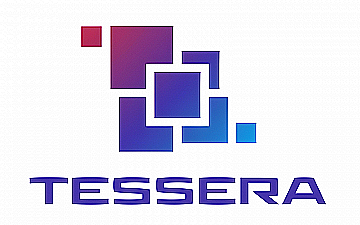The Law and Internet Foundation is proud to inform that last week it marked the successful completion of the E-PROTECT project, implemented with the support of the Justice Programme of the European Commission! The E-PROTECT project was implemented by 5 organisations from 5 EU Member States – Bulgaria, Austria, Italy, Greece and Romania under the coordination of Law and Internet Foundation. These organisations were brought together by their desire to combine their efforts and contribute to an improved understanding on the child rights established by Directive 2012/29/EU.
In total 8 events were organised in Bulgaria, welcoming more 200 child protection professionals. Most of the findings detailed in the E-PROTECT Country report on the individual assessment methodologies of child victims of crime in Bulgaria and the E-PROTECT Country report on the transposition of Victims’ Directive in Bulgaria were confirmed by the participants and the debates led during the E-PROTECT events throughout Bulgaria.
One of the main project deliverables are the Policy Guidelines for Bulgaria, which identify as a priority the need to fully transpose Art.22 of the Victims’ Directive within the Bulgarian context. On a more positive note, both the desk-based research and the events confirmed that there is a multidisciplinary mechanism responsible for the individual needs’ assessment performance – the coordination mechanism. In practice, the individual assessment is performed in cases of violence against children, or in cases of human trafficking, clustered under the social and not the judicial system. However, MeetUps’ participants highlighted that in an event of an online crime, the coordination mechanism would not be convened, and that in general online crimes and violence tend to be neglected by the law enforcement authorities. This calls for a change of the prerequisites for the coordination mechanisms convergence, as well as the type of experts sitting on it, as cases of cybercrimes and cyberbullying are increasing and the participation of experts in this field will be appreciated.
Part of the issues stemming out of the limited transposition of the Victims’ Directive in Bulgaria are rooted in the fragmented legislation regulating the protection of child victims of crime. On the one hand there is the legislation on social services and child protection (namely the Child Protection Act, which logistically falls in the civil law family), and on the other – the Bulgarian Criminal Procedure Code. In addition, there is also the Act on Support and Financial Compensation to Crime Victims which primarily establishes different administrative procedures. The situation is further aggravated by the lack of communication and interaction between the judicial and social system, and the general unawareness by the different actors on the rules governing the other system. Effectively, there is a necessity to fully transpose the provision of Art. 22 in the national legislation, however the legislator is to consider which is the appropriate legal act fitting its purpose.
With regards to the appropriate measures that are to be applied and observed during ongoing criminal proceedings, it should be noted here that the legislator has failed to provide for the implementation of the basic principles of child-friendly justice aiming to ease child participation. Among the shortcomings is the lack of transposition of the provision of Art. 23 Victims’ Directive requiring that child interviews and hearings are to be led by the same person, ideally from the same gender, who has undergone appropriate education/ is of relevant background. In practice however these principles are observed as a result of the individual efforts of appointed experts. Many of the participating judiciary and law enforcement representatives have shared that they strive to organise a single interview with the child, using appropriate premises – the blue room available across Bulgaria, while employing trained in child-sensitive communication professionals. Nonetheless the fact that this is indeed a good practice, its practical realisation is dependent on the individual subjective assessment of the persons responsible for handling the case in the respective phase of the criminal proceedings.
When discussing Art. 23 & 24 Victims’ Directive prescriptions, one last remark is to be made. From policy- and legal-making point of view, changes are to be introduced to not allow contact between the victim and the perpetrator. The current legislation in this direction is rather scarce, providing the possibility to use communication and information technologies to carry out interviews with the victim, and there is room for improvement.
Firstly, the relevant provisions are of discretionary nature which might deprive the child victim of their right to benefit from such protection measures. Then, the legislation might envisage separate entries to the court building, the use of screens, etc. to avoid eye contact between victim and perpetrator and ensure a child-friendly environment throughout the course of the proceedings. As highlighted above, recent changes in the Bulgarian Criminal Procedure Code might potentially contribute to the fragmentation of the process of victim protection, and the inability to allocate responsibilities. Although Art. 417a stipulates that the vulnerable victim is to be informed of the prison release of the already sentenced perpetrator by the director of the respective prison, it is not clear how the latter will be aware of who the victims is, nor of his/ her contact details so the provision is appropriately implemented in practice. To this end, it is a duty of the Bulgarian legislator to address the points made in this section and overcome the gaps in legislation underlined here.
E-PROTECT events demonstrated the existing need for the child protection professionals’ community consolidation, and for an appropriate forum to facilitate this process. An unexpected value of the E-PROTECT implementation in Bulgaria was precisely its facilitating role establishing a bridge between the array of experts dealing with child victims of crime. This was particularly appreciated in the cities outside the capital where such events are a rare occasion. Human factor is a pivotal element of interagency cooperation thus the E-PROTECT project presented an opportunity for relationships to grow and blossom resulting in an improved holistic approach towards child protection.
In light of the project, a child victims of crime individual needs assessment methodology was elaborated to provide a tailored approach toward every particular case in order to ensure adequate measures for the overall improvement of the situation of children victims of crime.
E-PROTECT is also, to a large extent, dedicated to raising the overall awareness on child rights, granted by Directive 2012/29/EU and inspiring a cooperation among the large variety of professionals which deal with child victims of crime and often are their first point of contact. This is why the project developed a sophisticated online platform which not only provides exhaustive information about Directive 2012/29/EU practical application and transposition with regards to child rights, but also hosts targeted online events.
The project was implemented with the support of the Justice Programme of the European Commission under Grant Agreement № 760270.








